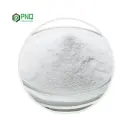Natural food pigment market grows at a compound annual rate of 6.8%
-
Last Update: 2021-02-15
-
Source: Internet
-
Author: User
Search more information of high quality chemicals, good prices and reliable suppliers, visit
www.echemi.com
market research firm
According to a
by Future Market Insights, global natural food colors grew at a compound annual rate of
6.8% in
2014-2020
. Natural food coloring is growing at
2.8
times faster than synthetic food coloring and
2.1
times.
2014
, the global market value of natural food coloring reached
1.14 billion
.14 billion.
understand that a variety of factors drive the rapid development of natural pigments. The growing demand for natural ingredients in the food processing industry, mainly to produce more food with "clean labels", has been a major reason for the rapid growth of the natural food pigment market in
2014-2020
. The U.S.
FDA
and the European Food Safety Authority (
EFSA
) have banned the use of most synthetic food colorings in food products, compared to synthetic food coloring, which offers a wide range of options for food processors. In addition, food pigment extraction technology, packaging innovation and other factors are also driving the development of the global natural food pigment market.region, Western Europe is the largest market for natural food coloring, with
26%
. The development of various food-related regulations in the region has promoted the development of the natural colored food market. In addition, the Asia Pacific region (
APEJ
) and North American markets are shifting to natural, preservative-free foods, which will further promote the future widespread use of natural pigments in the region.In terms of species, the report mentions
7,
natural pigments, including anthotin, carotenoids (β
-
carotene, carotenoids, carolin, liquetin and lycoprotein), curcumin, red pepper extract, spirulina extract, chlorosteroids and other pigments (e.g., beetrol, carotenoids, etc.). Carotenoids are the largest market share of all pigments, with
a global market share of
31%
in
2014, followed by anthotin (
22%
). In addition, red pepper extract and curcub shared
20%
in
2014
.Carotenoids are known to have an ultra-high stability and color multilaterality (from yellow to red), making them the most widely used pigment of all natural colors. Lycoprotein is expected to be the fastest growing of all carotenoids, with a CAGR of
11.4%
. The compound annual growth rate of the genus Spirulina is expected to show double-digit growth in
2020-
, thanks in large part to the approval of the U.S.
FDA
for the use of Spirulina genus extracts in pastry confectionery and baking products.
This article is an English version of an article which is originally in the Chinese language on echemi.com and is provided for information purposes only.
This website makes no representation or warranty of any kind, either expressed or implied, as to the accuracy, completeness ownership or reliability of
the article or any translations thereof. If you have any concerns or complaints relating to the article, please send an email, providing a detailed
description of the concern or complaint, to
service@echemi.com. A staff member will contact you within 5 working days. Once verified, infringing content
will be removed immediately.







